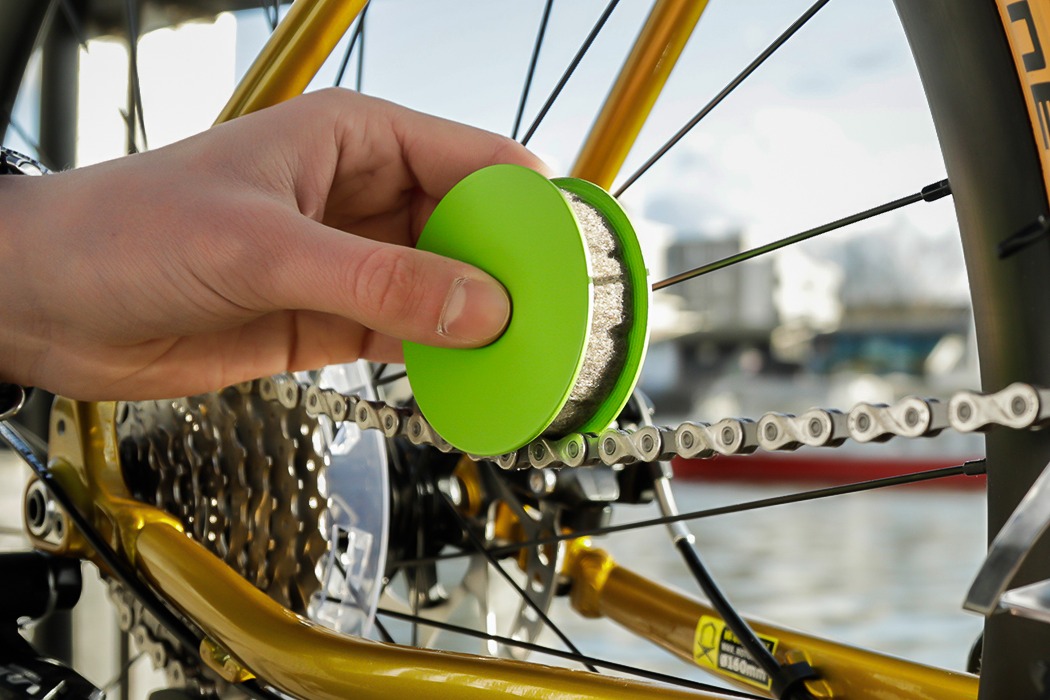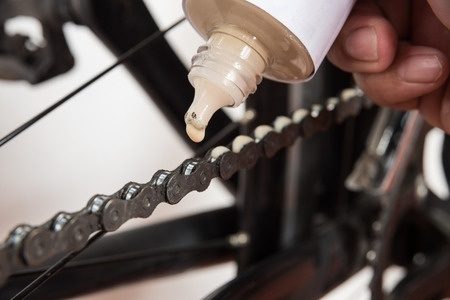The Significance of Chain Lubrication for Bike Performance
Regular chain lubrication is crucial for maintaining optimal bike performance, reducing wear and tear, and ensuring a smooth ride. Bike chains consist of numerous interconnected parts that are subjected to constant friction and stress during cycling. Without proper lubrication, these parts can generate excessive heat, leading to accelerated wear, reduced efficiency, and potential component failure. Moreover, a poorly lubricated chain can cause increased resistance, making pedaling more challenging and negatively impacting the overall cycling experience.
Neglecting chain lubrication can result in various issues, including rust, corrosion, and stiffness. These problems can significantly reduce the lifespan of the chain and other drivetrain components, leading to costly replacements and repairs. Furthermore, a poorly maintained chain can negatively affect the bike’s shifting and braking performance, potentially compromising the rider’s safety. Therefore, implementing a regular chain lubrication routine is essential for any bike owner seeking to maximize their cycling experience and protect their investment.
Understanding Chain Lubrication Options: Types and Features
Choosing the right chain lubricant for your bike is essential for ensuring optimal performance and longevity. Various types of chain lubricants are available, each with unique features and benefits. Understanding these differences can help you make an informed decision based on your riding conditions and frequency.
Wet lubricants, also known as oil-based lubes, are ideal for wet and muddy conditions. They provide excellent resistance to water and dirt, ensuring consistent lubrication even in adverse weather conditions. However, wet lubricants can attract more dirt and grime, which may require more frequent cleaning. Therefore, they are not recommended for dry or clean riding environments.
Dry lubricants, on the other hand, are better suited for dry and clean conditions. They are designed to penetrate deep into the chain links, providing a thin, protective layer that reduces friction and wear. Dry lubricants are less likely to attract dirt and grime, making them a popular choice for road cyclists and mountain bikers who ride in dry environments. However, they may not provide sufficient protection in wet or muddy conditions.
Wax-based lubricants offer a balance between wet and dry lubricants. They provide excellent water resistance and reduced friction, making them suitable for various riding conditions. Wax-based lubricants also attract less dirt and grime compared to wet lubricants, which can help extend the cleaning intervals. However, they may not provide the same level of protection as wet lubricants in extremely wet or muddy conditions.
When selecting a chain lubricant, consider factors such as riding frequency, distance, and conditions. For instance, if you frequently ride in wet or muddy environments, a wet lubricant may be more suitable. Conversely, if you primarily ride in dry or clean conditions, a dry or wax-based lubricant may be a better choice. Additionally, consider the manufacturer’s recommendations and guidelines for selecting the appropriate lubricant for your specific bike and drivetrain components.
How to Apply Chain Lubricant: Step-by-Step Instructions
Applying chain lubricant correctly is crucial for ensuring optimal performance and longevity. Follow these easy-to-follow steps to apply chain lubricant effectively:
-
Clean the chain: Before applying lubricant, clean the chain to remove any dirt, grime, or debris. You can use a chain cleaning device, a brush, or a rag soaked in a degreaser to clean the chain thoroughly. Make sure to wipe off any excess degreaser before proceeding to the next step.
-
Shift to the smallest chainring and sprocket: This position allows for better access to the chain links and ensures that the lubricant penetrates deep into the chain.
-
Apply the lubricant: Hold the lubricant nozzle close to the chain and apply a drop of lubricant to each roller. You can also apply lubricant to the inner and outer plates of the chain, but make sure not to over-lubricate. A single drop per roller should be sufficient.
-
Backpedal the chain: Slowly backpedal the cranks to distribute the lubricant evenly across the chain. This step helps the lubricant penetrate deep into the chain links and ensures that all moving parts are well-coated.
-
Wipe off excess lubricant: Use a clean, dry rag to wipe off any excess lubricant from the chain. Over-lubrication can attract dirt and grime, which can compromise the chain’s performance and longevity.
-
Repeat as necessary: Depending on the riding conditions and frequency, you may need to repeat this process every few rides or after a wet or muddy ride. Regular chain maintenance can help extend the lifespan of the chain and other drivetrain components, ensuring optimal performance and a smooth ride.
When applying chain lubricant, remember to avoid over-lubrication and to wipe off any excess lubricant. Regular cleaning, inspection, and adjustment can also help maintain chain lubrication over time and prevent common chain issues such as rust, wear, and stiffness. By following these best practices, you can ensure optimal chain performance and longevity, enhancing your overall cycling experience.
Top Chain Lubricant Products for Bike Enthusiasts
Choosing the right chain lubricant for your bike can be a daunting task, given the variety of options available. Here are some of the top chain lubricant products on the market, based on customer reviews, expert opinions, and performance data. This list includes a mix of wet, dry, and wax-based lubes, ensuring that you find the perfect fit for your riding conditions and frequency.
Wet Lubricants
-
Finish Line Wet Lubricant: This lubricant provides excellent water resistance and durability, making it ideal for wet and muddy conditions. Its long-lasting formula reduces friction and wear, ensuring optimal performance and longevity.
Dry Lubricants
-
Park Tool Chain Lubricant: This dry lubricant is designed for use in dry and clean conditions. Its low-viscosity formula penetrates deep into the chain links, reducing friction and wear. Its non-sticky formula also attracts less dirt and grime, ensuring a cleaner and smoother ride.
Wax-Based Lubricants
-
Squirt Chain Lube: This wax-based lubricant offers a balance between wet and dry lubricants. Its water-displacing formula provides excellent water resistance, while its low-friction formula reduces wear and tear. Its non-sticky formula also attracts less dirt and grime, ensuring a cleaner and smoother ride.
When selecting a chain lubricant, consider factors such as riding frequency, distance, and conditions. For instance, if you frequently ride in wet or muddy environments, a wet lubricant may be more suitable. Conversely, if you primarily ride in dry or clean conditions, a dry or wax-based lubricant may be a better choice. Additionally, consider the manufacturer’s recommendations and guidelines for selecting the appropriate lubricant for your specific bike and drivetrain components.
By choosing the right chain lubricant and applying it correctly, you can ensure optimal chain performance and longevity, enhancing your overall cycling experience. Regular chain maintenance, including cleaning, inspection, and adjustment, can also help maintain chain lubrication over time and prevent common chain issues such as rust, wear, and stiffness.
Maintenance Tips for Long-Term Chain Lubrication Success
Regular maintenance is crucial for ensuring optimal chain performance and longevity. By following these tips and best practices, you can maintain chain lubrication over time and prevent common chain issues such as rust, wear, and stiffness.
Clean the Chain Regularly
Cleaning the chain regularly is essential for removing dirt, grime, and debris that can compromise chain lubrication. Use a chain cleaning device, a brush, or a rag soaked in a degreaser to clean the chain thoroughly. Make sure to wipe off any excess degreaser before applying lubricant.
Inspect the Chain
Inspect the chain regularly for signs of wear, rust, or stiffness. Use a chain wear indicator tool to measure chain stretch and determine when it’s time to replace the chain. Catching chain issues early can prevent more significant problems down the line.
Adjust Chain Tension
Proper chain tension is crucial for optimal chain performance and longevity. Adjust chain tension according to the manufacturer’s recommendations and guidelines. A chain that is too tight or too loose can cause excessive wear and tear on the chain and other drivetrain components.
Lubricate the Chain Correctly
Lubricating the chain correctly is essential for maintaining chain lubrication over time. Follow the step-by-step instructions for applying chain lubricant, emphasizing the importance of cleaning the chain before lubrication and avoiding over-lubrication.
Store the Bike Properly
Storing the bike properly can help maintain chain lubrication and prevent rust and corrosion. Store the bike in a dry, well-ventilated area, away from direct sunlight and moisture. If storing the bike for an extended period, consider using a bike cover or storing it indoors.
By following these maintenance tips and best practices, you can ensure optimal chain performance and longevity, enhancing your overall cycling experience. Regular chain maintenance, including cleaning, inspection, and adjustment, can also help prevent common chain issues and extend the lifespan of the chain and other drivetrain components.
Comparing Chain Lubrication to Alternative Maintenance Methods
While chain lubrication is a crucial aspect of bike maintenance, alternative maintenance methods are also available. Here, we examine the pros and cons of chain lubrication compared to alternative maintenance methods, such as chain cleaning devices, dry lubes, or ceramic coatings. We provide an objective assessment of each method’s effectiveness, cost, and ease of use.
Chain Cleaning Devices
Chain cleaning devices are designed to simplify the chain cleaning process. They typically consist of a plastic container filled with a degreaser, which is attached to the chain and backpedaled to clean the chain. While chain cleaning devices can be effective at removing dirt and grime, they may not provide the same level of cleanliness as manual cleaning. Additionally, they can be expensive and may not be as accessible as traditional cleaning methods.
Dry Lubes
Dry lubes are designed to provide a dry, clean lubrication option for bikes. They typically consist of a wax-based formula that is applied to the chain and allowed to dry. Dry lubes can be effective at reducing friction and wear, but they may not provide the same level of water resistance as wet lubes. Additionally, they may require more frequent application, particularly in wet or muddy conditions.
Ceramic Coatings
Ceramic coatings are designed to provide a durable, long-lasting lubrication option for bikes. They typically consist of a ceramic-based formula that is applied to the chain and allowed to cure. Ceramic coatings can be effective at reducing friction and wear, and they may provide a longer-lasting lubrication option than traditional lubes. However, they can be expensive and may require specialized application techniques.
Ultimately, the choice of maintenance method depends on individual preferences and riding conditions. Chain lubrication remains a crucial aspect of bike maintenance, but alternative methods, such as chain cleaning devices, dry lubes, or ceramic coatings, can also be effective. By understanding the pros and cons of each method, cyclists can make informed decisions about the best maintenance approach for their needs.
Environmental Considerations for Chain Lubrication
When discussing chain lubrication for bicycles, it’s essential to consider the environmental impact of this maintenance practice. Although lubrication is crucial for optimal bike performance, reducing wear and tear, and ensuring a smooth ride, it can also have negative environmental consequences if not managed responsibly.
One significant environmental concern associated with chain lubrication is the risk of contamination. Lubricants can leak or spill during the application process, posing a threat to soil, water, and local wildlife. To minimize this risk, it’s essential to apply lubricant carefully, using the appropriate tools and techniques, and to clean up any spills or leaks promptly.
Waste disposal is another environmental consideration. When lubricant becomes old, dirty, or ineffective, it must be disposed of properly to prevent contamination and harm to the environment. Many lubricant containers can be recycled, so it’s essential to check local recycling guidelines before disposing of them. Additionally, some bike shops and recycling centers may offer lubricant recycling programs, making it easier to dispose of used lubricant responsibly.
Energy consumption is another factor to consider when it comes to chain lubrication for bicycles. The production, transportation, and disposal of lubricants require energy, contributing to greenhouse gas emissions and climate change. To minimize this impact, consider using biodegradable lubricants, which require less energy to produce and are better for the environment. Additionally, using high-quality lubricants that last longer and require less frequent application can help reduce energy consumption over time.
To minimize the environmental impact of chain lubrication for bicycles, consider the following best practices:
- Use biodegradable lubricants whenever possible.
- Recycle lubricant containers and participate in lubricant recycling programs when available.
- Apply lubricant carefully to minimize spills and leaks.
- Clean up any spills or leaks promptly to prevent contamination.
- Use high-quality lubricants that last longer and require less frequent application.
By following these best practices, cyclists can help minimize the environmental impact of chain lubrication while still maintaining optimal bike performance and ensuring a smooth ride.
Frequently Asked Questions about Chain Lubrication for Bikes
When it comes to chain lubrication for bicycles, many cyclists have questions about the best practices, tools, and techniques for maintaining their bike chains. Here are some of the most common questions and answers about chain lubrication for bikes.
How often should I lubricate my bike chain?
The frequency of chain lubrication depends on several factors, including riding conditions, frequency, and the type of lubricant used. As a general rule, it’s a good idea to lubricate your bike chain after every ride if you’ve been riding in wet or dirty conditions. If you’ve been riding in dry, clean conditions, you can probably get away with lubricating your chain once a week or so. However, it’s essential to inspect your chain regularly for signs of wear, rust, or stiffness, and to lubricate it as needed.
How do I remove excess chain lube?
After applying chain lubricant, it’s essential to remove any excess lube to prevent dirt and grime from accumulating on your chain. To remove excess lube, simply wipe your chain with a clean, dry cloth, being careful not to touch the chain with your fingers, as this can transfer dirt and grime back onto the chain. You can also use a chain cleaning device to remove excess lube and dirt from your chain.
How should I store my chain lubricant?
Chain lubricant should be stored in a cool, dry place away from direct sunlight. Exposure to heat and moisture can cause the lubricant to break down and become less effective over time. It’s also a good idea to keep your lubricant in an upright position to prevent leakage.
Can I use motor oil or WD-40 on my bike chain?
While motor oil and WD-40 may provide some short-term benefits for your bike chain, they are not recommended for long-term use. These products can attract dirt and grime, which can lead to increased wear and tear on your chain. Instead, it’s best to use a high-quality bike-specific chain lubricant that is designed to provide long-lasting protection and performance.
What is the difference between wet, dry, and wax-based chain lubes?
Wet chain lubes are designed for use in wet or muddy conditions and provide long-lasting protection against water and dirt. Dry chain lubes are ideal for use in dry or dusty conditions and are designed to attract less dirt and grime. Wax-based lubes are a newer option that provides a balance between wet and dry lubes, offering long-lasting protection and reduced dirt attraction. When selecting a chain lube, it’s essential to consider the riding conditions and frequency to choose the right lubricant for your needs.
By following best practices and using high-quality chain lubricants, cyclists can help ensure optimal bike performance, reduce wear and tear, and ensure a smooth ride. With regular maintenance and attention to detail, your bike chain can provide years of reliable service and help you enjoy all your cycling adventures.







